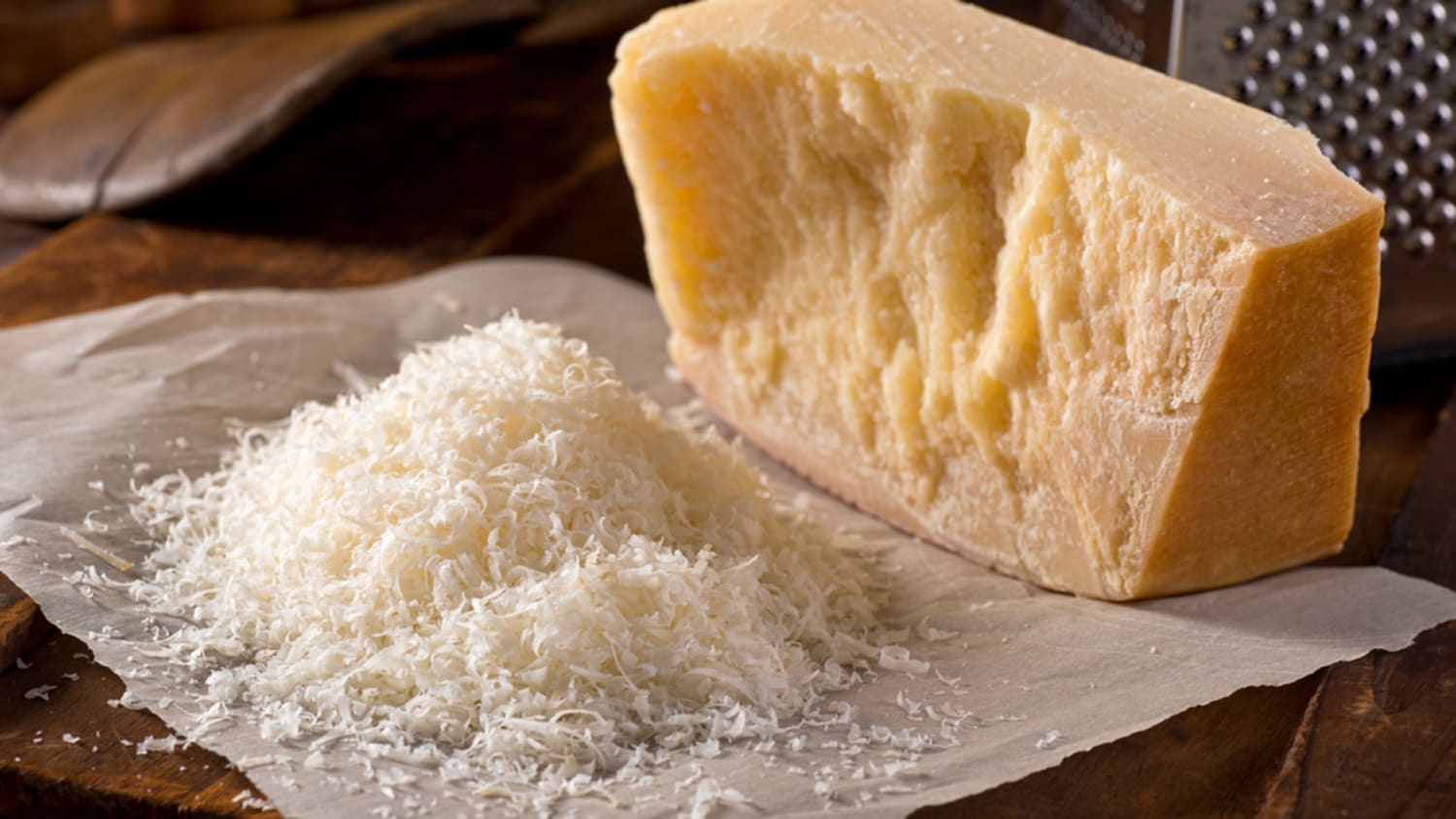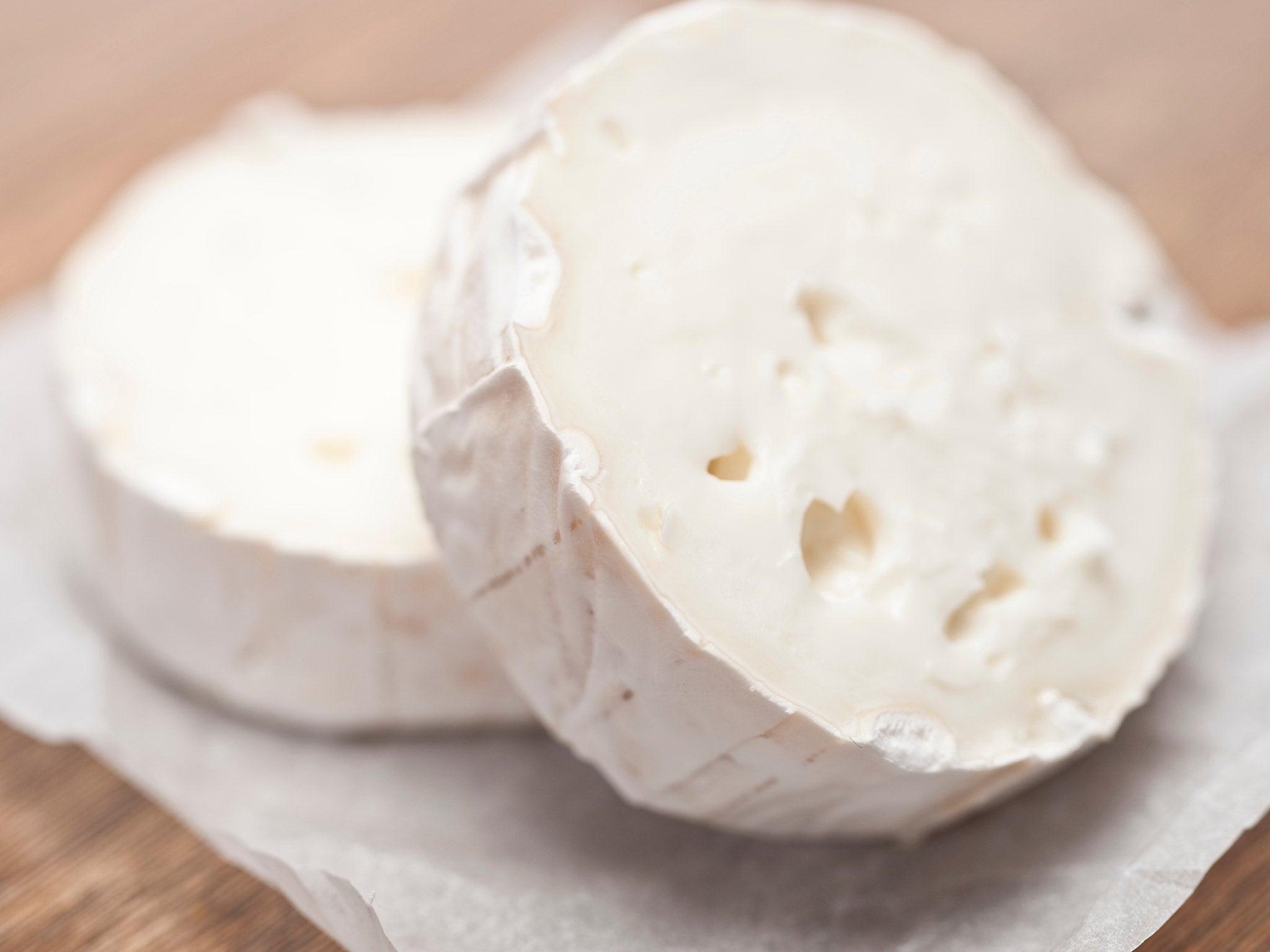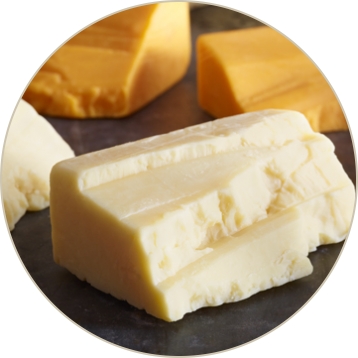Tag: fine aged cheddar
RECIPE: Cheddar and Bacon Stuffed Chicken Breasts
Cheddar and Bacon Stuffed Chicken Breasts
So it’s about the end of the day at work and you’re struggling to come up with ideas of what to make for dinner. Not only that, but you also want to try to deviate away from the norm and let your taste buds reach a new level of extreme tastiness. Here is a recipe that will truly satisfy those taste buds without breaking the wallet and with simple, easy to find ingredients at the grocery store.
Cheddar-And-Bacon-Stuffed Chicken Breasts
Ingredients
1) 6 slices bacon
2) 2 boneless, skinless chicken breasts
3) Salt and pepper
4) 2 teaspoons Dijon mustard, if desired
5) 1/4 cup grated cheddar cheese
Preparation
Preheat oven to 300 degrees.
Cook bacon on stove in oven-safe skillet until cooked but not crisp. Transfer to a paper towel-lined plate.
Flatten chicken breasts to about 1/4- to 1/8-inch thickness, and lightly season with salt and pepper.
Spread a teaspoon of Dijon mustard on each chicken breast, if desired.
Lay three pieces of bacon on each chicken breast, and top the bacon with the cheddar cheese.
Roll up each chicken breast, being careful to keep the bacon and cheddar tucked inside, and secure each with toothpicks.
Place the chicken rollups back in the pan with bacon grease and cook on the stove over medium heat, turning frequently, just to brown all sides.
Transfer the pan to the oven, and bake for 25 to 30 minutes, until chicken is cooked through. Feel free to baste the chicken with some of the bacon grease while it’s baking. (I warned you this was not diet food.)
Serve hot, preferably with some of these pretzel rolls.
The Cheese Report Card: A Guide to the Best Cheeses
Though high in saturated fats, it provides many essential nutrients including protein, vitamin D and zinc as well as calcium.
Here’s a round-up of your favourite cheeses and how healthy they are. All figures are based on a healthy portion size of 30 grams (a matchbox-size chunk).
- Swiss
120 calories, 9 g fat, 290 mg calciumVery high protein, with a matching high-mineral content. A 30g portion of Emmenthal provides more than a third of the Recommended Daily Allowance (RDA) of calcium and nearly a tenth of the RDA for zinc – essential for healthy skin, reproductive health and the immune system.Health score: 8/10

Brie
96 calories, 8 g fat, 162 mg calciumMost people assume it is one of the fattiest cheeses, but it has lower levels than cheddar or stilton and a good quantity of calcium. It is also a reasonable source of zinc and the rind is rich in vitamin B1 – essential for cells to release energy.
Health score: 6/10
Camembert
89 calories, 7 g fat, 105 mg calcium
Camembert has a third less fat and a quarter fewer calories than hard cheeses. It is high in folic acid which the body needs to make red blood cells, though pregnant women (who need a higher intake of folic acid) should avoid Camembert.
Health score: 5/10

Parmesan
136 calories, 9.8 g fat, 360 mg calcium
Extremely high in calcium, just a tablespoon of Parmesan grated over pasta supplies 15 per cent of the RDA. It is also the best cheese for zinc, although it is high in salt.Health score: 9/10
Cottage Cheese
29 calories, 1.2 g fat, 22 mg calcium
This is the only truly low-fat cheese, making it ideal for slimmers. But the downside is a low calcium content, which reduces its nutritional rating compared with other cheeses.
Health score: 5/10
.jpg)
Cheddar
124 calories, 10.3 g fat, 216 mg calcium
One of the highest-fat cheeses, but it’s also a good source of calcium and zinc. A national favourite, nonetheless.Health score: 6/10
Half-fat cheddar
78 calories, 4.5 g fat, 252 mg calcium
Also higher in protein, calcium and zinc than normal cheddar. But on the downside, it’s a bit lower in vitamins A and D.Health score: 9/10
Cream cheese
132 calories, 14.2 g fat, 29 mg calcium
The unhealthiest cheese as it is close to 50 per cent pure fat and has only a fraction of the calcium content of many hard cheeses.
Health score: 2/10
Edam
100 calories, 7.6 g fat, 231 mg calcium
Contains a medium amount of fat, is rich in calcium, but high in salt so is not advisable for high blood pressure sufferers.
Health score: 8/10

Goat’s cheese
59 calories, 4.7 g fat, 57 mg calcium
Low in calories and richer in vitamin D (an important bone-strengthener) compared with cow’s milk cheeses, although it is not a great source of calcium or zinc.
Health score: 6/10
Processed cheese slices
78 calories, 5.6 g fat, 213 mg calcium
Rich in calcium and lower in unhealthy saturated fats than unprocessed cheese. Gets its dubious ‘plastic appeal’ from added milk proteins, modified starch, preservatives and emulsifiers.
Health score: 6/10Feta
75 calories, 6 g fat, 108 mg calcium
Made with sheep’s milk, it has a moderate amount of calcium and fewer calories than half-fat cheddar. Feta is also a better source of vitamin D than cow’s milk cheese, but is also the saltiest variety – a 30g portion has a fifth of the daily guideline intake for women.
Health score: 7/10

Mozzarella
90 calories, 7.5 g fat, 155 mg calciumA medium-fat cheese which can be disproportionately high in unhealthy saturates. However, it has a good calcium content.
Health score: 7/10
Ricotta
56 calories, 4.4 g fat, 63 mg calcium
Fairly low in fat and salt, and contains low to medium amounts of calcium.Health score: 7/10
Stilton
123 calories, 10.7 g fat, 96 mg calcium
Similar to cheddar in fat and calories, but has a much lower calcium content. It is high in folic acid, though, like all blue-veined cheese, it is not suitable for pregnant women as it carries a listeria risk.
Health score: 4/10
Be sure to stop by Shisler’s Cheese House to pick up your supply of healthy cheeses or order online here!
Smile and Say Cheese! Cheese Promotes Dental Health!
Dairy products are important for good overall health, especially its contributions to our bone health. Eating cheese and other dairy products are also known to promote dental health as they help protect teeth against cavities, according to a study published in the an issue of General Dentistry
In the study conducted for that publication, researchers randomly assigned 68 participants aged 12 to 15 to one of four groups: cheese, milk, sugar-free yogurt or control (paraffin). The subjects chewed or swished their product for three minutes and then swished their mouths with water. Researchers measured the dental plaque pH level at four sites in each participant’s mouth at a period before consumption and then at periodic intervals at 10, 20 and 30 minutes after consumption of these products.
The subjects in the milk, sugar-free yogurt and paraffin groups had no real significant changes in the overall pH levels in their mouths. The pH levels for those who ate cheese, however, increased rapidly and dramatically at each interval following consumption. This would suggest that cheese has anticavity properties and that eating cheese could help fight the dental battle against cavities and plaque build up.

A pH level lower than 5.5 puts a person at risk of tooth erosion, which is a process that wears away tooth enamel and opens the door for plaque build up and tooth decay. “The higher the pH level is above 5.5, the lower the chance of developing cavities,” explains Vipul Yadav, lead author of the study.
The study results illustrated that the rising pH levels in the cheese group might have occurred because of increased saliva production, which could have been caused by chewing through the cheese itself. Also, various compounds found in cheese itself may adhere to tooth enamel and help protect teeth from acid that would otherwise eat away at the enamel on teeth, leading to tooth decay.
“It looks like dairy does the mouth good,” says Academy of General Dentistry spokesperson Dr. Seung-Hee Rhee, “Not only are dairy products a healthy alternative to carb or sugar-filled snacks, they also may be considered as a preventive measure against cavities.”

From an early age, we are encouraged to drink our milk. To the inevitable question “why” comes the response”, milk is good for you because it aids in the building of strong bones and teeth.” The same holds true for the other members of the milk family like yogurt and cheese. Dairy products are also good sources of protein as most nutrition programs suggest several portions of dairy products per day, more for young, growing children or pregnant or breast-feeding mothers.

But it turns out that eating cheese may be good for your teeth in more ways than one. Eating cheese may help reduce the incidence of cavities. When food is eaten, the pH often drops as the mouth becomes more acidic from the foods that are chewed. Teeth are very sensitive to acid and it appears that eating cheese helps maintain a pH level in the mouth that is safe for maintaining dental health and strong teeth. Under experimental conditions, it was shown that the pH drop following consumption of a 10% sugar solution was 4.26, but when the sugar solution was eaten after cheese, the pH dropped to only 6.48.
Aged cheddar, Swiss, blue, Monterey Jack, brie, Gouda, and processed American cheese all have been shown to reduce dental caries.
Let Shisler’s Cheese House be your dental health supporter as we have a wide selection of cheeses that can bring out that beautiful smile of yours!
Sharp Cheddar: An Explosion of Flavor
Imagine life without the presence of Cheddar Cheese or some form of it… Yep, it’s hard to imagine life without cheddar cheese — there’s a block of it in the fridge of nearly every household, ready to be sprinkled onto scrambled eggs, melted within grilled cheese sandwiches or stirred into cheese sauce for homemade macaroni and cheese.
Cheddar cheeses can becoming confusing with its complexities of flavors and appearances: some are white, some are yellow or orange, and some cheddars are mild, sharp or extra sharp. Cheddars seem to be the only cheese with that distinction, so what does it all mean? 
How is Cheddar Cheese Made?
Before we get to talking about sharp cheddar cheese, to begin, let’s delve into what cheddar is in the first place. It’s a cow’s milk cheese that originated in the village of Cheddar, England and has since grown immensely, taking the nation by storm, becoming one of the most popular and inexpensive cheeses in the US.
The cheddar-making process starts out like most other cheeses: the milk is cultured, a process in which starter bacteria is added to acidify the milk. When a sufficient amount of acid is produced, rennet is added and milk curds are formed. Upon the formation of these curds, the excess watery whey is drained out to leave behind mostly concentrated curds. These concentrated curds are then heated to about 100° F to release even more excess, watery whey and sequentially, begin the process of melting these curds together.
It’s at this point that cheddar continues on a different path,as compared to other cheeses, in cheese-making called the cheddaring process. The curds are formed into big slabs that are the piled together and flipped over several times, getting denser with each flip while releasing more of this watery whey. It is at this stage that the pressed curds are sent through a mill that produce smaller curds again before being pressed into molds to drain further and begin the aging process.
The Many Colors of Cheddar…
Why is some cheddar white while other variations of cheddar are yellow and others, orange? Historically, cheddars made in New England were not dyed and left white, while cheddars made elsewhere were dyed with things like annatto to help readily distinguis the cheddar’s origin. Today, it’s just a sense of consumer preference and both dyed and undyed variations of cheddar are still produced for consumption.

What Makes Cheddar Sharp?
Cheddar cheese is one of those unique cheeses in the dairy industry that has a its own descriptor before it, “sharp”. It’s carries this label rather loosely and is not regulated, so designations can be and tend to be inconsistent across various brands.
Sharp is a term that illustrates how cheddar changes in its flavor and texture over a period of time; for simplicity’s sake, sharp is used for cheddar as it ages… the stronger the bite, the longer it has been aged. Milder variations of cheddars are generally aged 2 to 3 months, sharper variations are aged 6 to 9 months, and extra-sharp are generally aged 1 to 2 years, before the final product. As cheddar ages, it goes from mild to tangier with more complex, deeper and bolder flavors. Its texture also goes from smooth and creamy to developing hard, salt-like crystals called calcium lactate. So, next time when you’re biting into an aged, Sharp Cheddar, and feel a crunch, it is these crystals that are producing this distinct crunch.
The best way to understand the age and sharpness of cheddar is to taste two different ages of cheddar side-by-side. Go with the same brand if possible to have a fair comparison and begin the aged cheddar tasting experience! Only then will you know if you like mild and creamy or nutty, tangy and bold.
Cooking with Cheddar
Whether just nibbling on cheddar or planning a dish involving Sharp Cheddar, the best practice is to go with the age (sharpness) of cheddar you think tastes the best. On the contrary, cooking with cheddar is an entirely different tale. The more aged the cheddar is, the less moisture it contains and the greater the heat needed to melt it. Mild or sharp cheddars melt the best, while aged cheddars tend to share melting behaviors similar to Parmesan cheese.
There you have it…. everything you need to know about cheddar and how to pick the right one at your local grocery store or specialty store. Shisler’s Cheese House carries a great selection of mild and aged cheddar cheeses!
Origins of Canadian Cheddar: A Fine Aged Cheddar
If you love cheese, you must have tasted the fine aged cheddar. If the cheddar felt stronger and had a sharper flavor, you can be sure it was the Canadian aged cheddar. This vintage cheddar is extremely mature and strong. Special facilities are needed to make this cheese which has to be maintained carefully at a constant temperature.
Fine aged cheddar can be matured for up to 15 months. Canadian cheddar is matured for at least 4 years and come with a pungent, earthy and sharp flavor. This type of cheese comes with a firm texture. Those who enjoy crumbly cheese choose the farmhouse traditional cheddar.
Cheddaring refers to the process where curd is kneaded with salt after heating. It is then drained of the whey, cut into cubes and stacked and turned. Apart from fine aged cheddar, other types of cheddar cheese sold in shops include the orange cheddar, white cheddar and flavorful cheddars such as Horseradish cheddar, garlic cheddar, smoked cheddar, and bacon cheese.
Since the year 1170, cheddar cheese has been in production in England. There is a common belief that the recipe was brought into Britain by the Romans. It was only in the nineteenth century that cheddar cheese was standardized and modernized by Joseph Harding the Somerset dairyman. He is known as the father of Cheddar because he promoted dairy hygiene and used the latest technical developments to make fine cheese. He also propagated modern techniques for making a variety of cheddar cheese including the fine aged cheddar.
It was way back in 1864 that Joseph Harding described fine aged cheddar as mellow in quality and character, yet firm in texture. This cheese comes with a fine and full flavor and practically melts in your mouth.
Canadian fine aged cheese is today paired with wine by connoisseurs. Cheddar pairs well with wines such as Merlot, Syrah and Zinfandel red wines. White wine lovers enjoy their cheddar with Sauvignon Blanc, Pinot Gris and Riesling. If you enjoy sophistication and wish to pair your Canadian fine aged cheese with wine, then you must choose the fine Port, Brandy or Madeira.
Alternately you can also pair your cheddar with Porter, Pale Ale and Stout. Enjoy fine aged cheddar with good Scotch. If you have a delicate palate, you can pair cheddar with cider or fruit beer. The combinations are limited only by your imagination and taste.
What do you think? Let us know your favorite uses or pairings for Canadian Cheddar in the box below.




